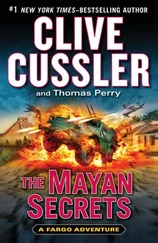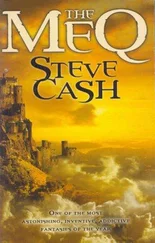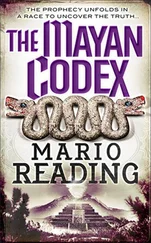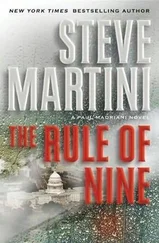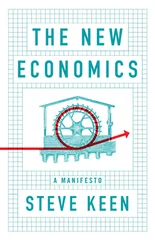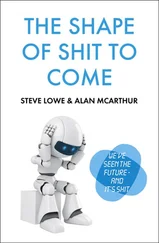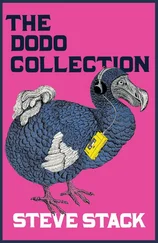Steve Alten - The Mayan Resurrection
Здесь есть возможность читать онлайн «Steve Alten - The Mayan Resurrection» весь текст электронной книги совершенно бесплатно (целиком полную версию без сокращений). В некоторых случаях можно слушать аудио, скачать через торрент в формате fb2 и присутствует краткое содержание. Жанр: Триллер, на английском языке. Описание произведения, (предисловие) а так же отзывы посетителей доступны на портале библиотеки ЛибКат.
- Название:The Mayan Resurrection
- Автор:
- Жанр:
- Год:неизвестен
- ISBN:нет данных
- Рейтинг книги:3 / 5. Голосов: 1
-
Избранное:Добавить в избранное
- Отзывы:
-
Ваша оценка:
- 60
- 1
- 2
- 3
- 4
- 5
The Mayan Resurrection: краткое содержание, описание и аннотация
Предлагаем к чтению аннотацию, описание, краткое содержание или предисловие (зависит от того, что написал сам автор книги «The Mayan Resurrection»). Если вы не нашли необходимую информацию о книге — напишите в комментариях, мы постараемся отыскать её.
The Mayan Resurrection — читать онлайн бесплатно полную книгу (весь текст) целиком
Ниже представлен текст книги, разбитый по страницам. Система сохранения места последней прочитанной страницы, позволяет с удобством читать онлайн бесплатно книгу «The Mayan Resurrection», без необходимости каждый раз заново искать на чём Вы остановились. Поставьте закладку, и сможете в любой момент перейти на страницу, на которой закончили чтение.
Интервал:
Закладка:
By 2015, the eastern seaboard of the United States was becoming a very dangerous place to live. Seven super-canes had formed in the Atlantic, two making landfall. The worst of the lot was Super-Cane Pamela, whose double eye finally collapsed over Wilmington, North Carolina, pummeling the evacuated city with her near 200-mph winds and two dozen tornadoes.
Nature was taking its vengeance upon modern man, and something had to be done to placate her.
The first attempt to modify a hurricane’s winds dates back to 1947 and Project CIRRUS. Warm ocean water and high humidity in the air produce a drop in pressure along the surface. Horizontal winds near the surface respond to this drop in pressure by accelerating inward. The more the surface pressure falls, the higher the winds become. As low-level air moves inward from greater distances, the process intensifies, building around the eye of the storm. Project CIRRUS scientists attempted to cool the cyclone’s ‘chimney’ by dumping dry ice along a storm’s inward wall, disrupting its pressure differential.
Unfortunately, CIRRUS aircraft were not equipped to monitor a cyclone’s dynamic and structural changes. Worse, the first hurricane they attempted to cool abruptly changed direction and struck Georgia, causing a political ruckus. CIRRUS was canceled, and crippling new limitations were placed on all future cloud-seeding experiments.
These limitations would drastically affect Project STORMFURY, an ambitious hurricane modification program conducted from 1962 through 1983 by the Weather Bureau (eventually the NOAA), the Department of Defense, and the National Science Foundation. The basic idea behind STORMFURY was to heat the atmosphere over a greater distance from the hurricane’s eye, reducing the pressure gradient near the center of the storm, thereby reducing its wind speed. To achieve that end, scientists seeded the clouds away from the storm’s core with silver iodide (AgI), whose crystals are an especially efficient freezing nuclei, causing supercooled water droplets to change to ice crystals. By inducing freezing of the supercooled water held in the upper clouds away from the storm’s eye, a sufficient quantity of latent heat might be released to reduce noticeably the surface pressure gradient.
On August 19, 1963, Hurricane Beulah formed east of the Lesser Antilles. By August 24, the storm had been seeded twice, its maximum winds dropping by more than thirty knots. The cyclone’s eye wall dissipated, then re-formed ten miles farther away from the center of the storm. Unfortunately, a causal relationship could not be established, and STORMFURY, strangled by the new seeding restrictions, eventually lost all funding.
It wasn’t until 2016 that President Ennis Chaney reestablished funding for these vital experiments. Years later, three scientists would unite to take STORMFURY’s experiments one step further.
Essentially, a hurricane is fueled by the latent heat released by the condensation of water vapor to liquid cloud droplets. STORMFURY’s scientists chose to draw the hurricane’s latent heat away from the eye, hoping to disrupt its vortex by spreading its energy out over a greater distance. Dr. Lowell Krawitz, a meteorologist at MIT, wanted to attack the power train of the cyclone at its source by cooling the interior eye wall, thereby inhibiting condensation and convection. His delivery system-the Navy’s antiquated fleet of Trident nuclear submarines. Under Krawitz’s plan, vertical missile silos that once held Trident D-5 nuclear missiles would be refitted and converted into pressurized ejection systems, powered by the subs’ nuclear reactors. By ascending within a super-cane’s eye while still at sea, a cooling agent could be injected directly into the eye wall. While stopping a hurricane was not feasible, reducing its wind speed from 200 to 130 miles an hour would reduce its energy by more than 50 percent-something that could save countless lives and billions of dollars should the cyclone ever reach land.
What Dr. Krawitz needed was a compound that would both cool and expand.
Enter Dr. David Mohr and his colleague, Barry Perlman, two scientists who had spent the last twenty years working on liquid hydrogen/liquid oxygen rocket engines. Together, they had developed several variants of cryogenic nitrogen gas used to cool fuels. A chance meeting with Dr. Krawitz led them to experiment with a nitrogen-hybrid gas, which, when introduced to a lower pressure region, would expand exponentially as it cooled.
On August 10, 2023, eight refitted Trident SSBN submarines moved to intercept Super-Cane Carol, whose 193-mile-per-hour winds were trekking west across the Atlantic toward Haiti and the southeastern seaboard of the United States. The submarine fleet rose within the eye and, maintaining course and speed, proceeded to pump MPK gas (named after the three scientists) directly at the approaching southeastern wall of the storm.
As the hurricane continued on its northwesterly track, the passing eye wall inhaled the MPK gas, which expanded a hundredfold as it crystallized. Within minutes, the cryogenic gas disrupted the vertical convection within the cyclone’s wall clouds, thus reducing the amount of water vapor being condensed and sharply reducing the release of latent heat. Within an hour, sustained winds had dropped from 193 to 157 miles per hour at the center of the storm-a substantial reduction.
The success of the experiment earned the three scientists Nobel prizes and rejuvenated the Navy’s antiquated fleet of nuclear submarines. A new sub force, known as ‘the weather net’ was commissioned, with refueling outposts established in the North Atlantic, North Pacific, and western North Pacific. Having been relegated to reduced duties thanks to the advent of space defense systems, the Navy was suddenly back in business as ‘Cyclone Killers.’
Bruce Doyle stifles another yawn as he watches Super-Cane Kenneth’s powerful vortex near the Virgin Islands. Doyle is exhausted, having kept vigil on the super-cane since the tropical cyclone’s birth ninety-seven hours earlier.
And Kenneth is becoming an absolute monster, more enormous than even Super-Cane Pamela. To make matters worse, a fire at the weather-net depot in Haiti has forced the Navy to arrange emergency shipments of MPK cryogenic nitrogen gas mix from the Port of Miami. A three-day delay in acquiring an antiquated oil tanker for transport has allowed the already dangerous Category-6 storm to intensify.
The ESMA director checks the latest information coming in from the center’s Unmanned Cyclone Aerial Lab, known as ‘UNCLE.’ Resembling a four-foot steel dart with wings, these hurricane chasers fly back and forth through the storm, transmitting data.
SUPER -CANE KENNETH 0400 GMT TUESDAY 11/22/33
LOCATION: 18.3N 53.7W
MAX. WIND: 199 MPH
GUSTING: 212 MPH
MOVING: NW AT 14 MPH
PRESSURE: 941 MB
PREDICTED U.S. LANDFALL: SATURDAY 11/26/33 13:40 HRS
DESTINATION: SOUTHEAST FLORIDA
‘Jesus…’ Bruce Doyle touches the speed dial on his cell phone. ‘Sharon, it’s me. Contact the airlines. I want you and the kids in Philly by tomorrow afternoon. Don’t argue, just plan on staying with your mother at least a week.’
31
Tuesday Night
Manny follows his brother through the indoor Japanese garden, his head still foggy from the physician’s mood inhibitor. Moonbeams peek through the atrium’s Plexiglas dome above their heads, lighting the gravel path and a shallow stream, which crosses beneath a small wooden bridge up ahead.
‘You okay?’ Jacob asks.
‘No. What is this place?’
‘I call it my refuge, it’s the only place I feel safe. This entire complex is shielded from electrostatic waves. We call it a quiet zone. It safeguards my presence from Lilith and any other Hunahpu who might be out there.’
Читать дальшеИнтервал:
Закладка:
Похожие книги на «The Mayan Resurrection»
Представляем Вашему вниманию похожие книги на «The Mayan Resurrection» списком для выбора. Мы отобрали схожую по названию и смыслу литературу в надежде предоставить читателям больше вариантов отыскать новые, интересные, ещё непрочитанные произведения.
Обсуждение, отзывы о книге «The Mayan Resurrection» и просто собственные мнения читателей. Оставьте ваши комментарии, напишите, что Вы думаете о произведении, его смысле или главных героях. Укажите что конкретно понравилось, а что нет, и почему Вы так считаете.


